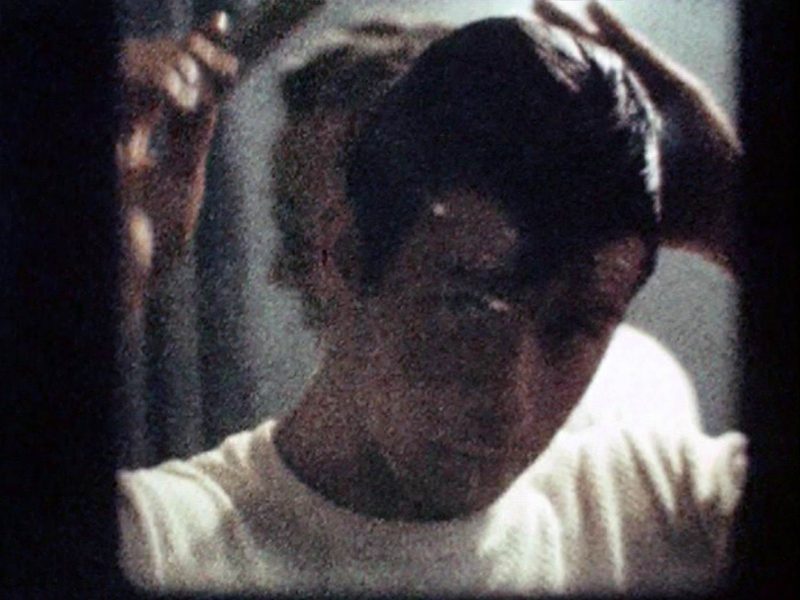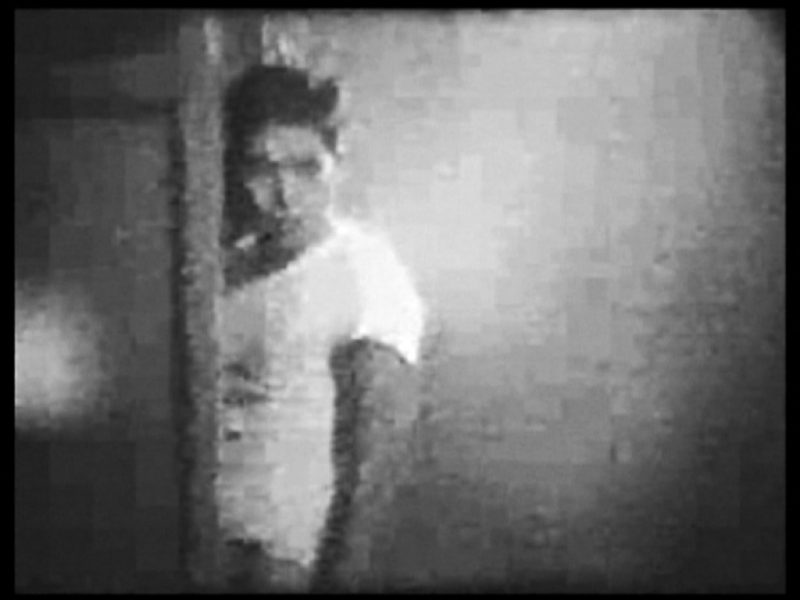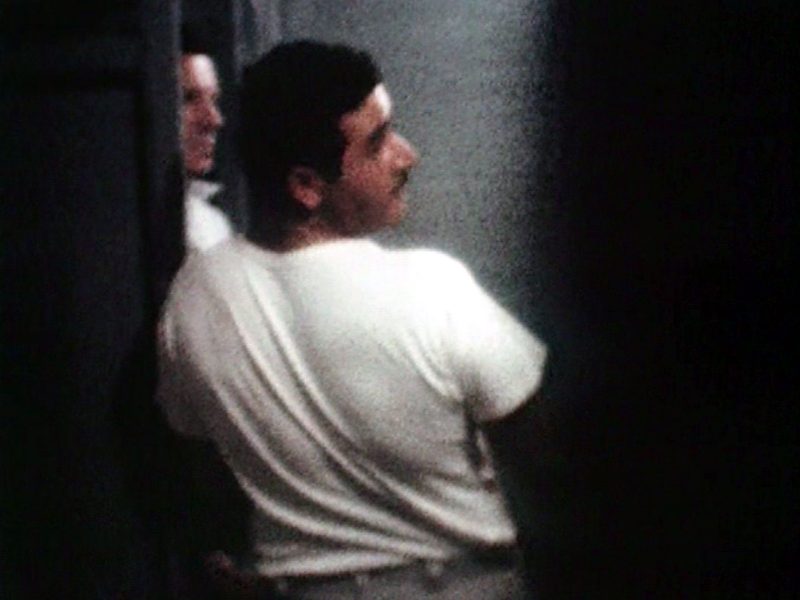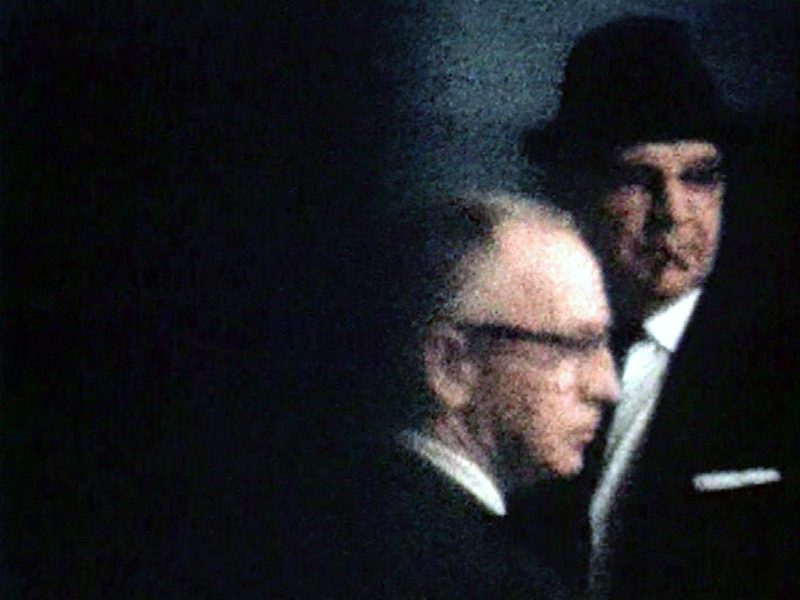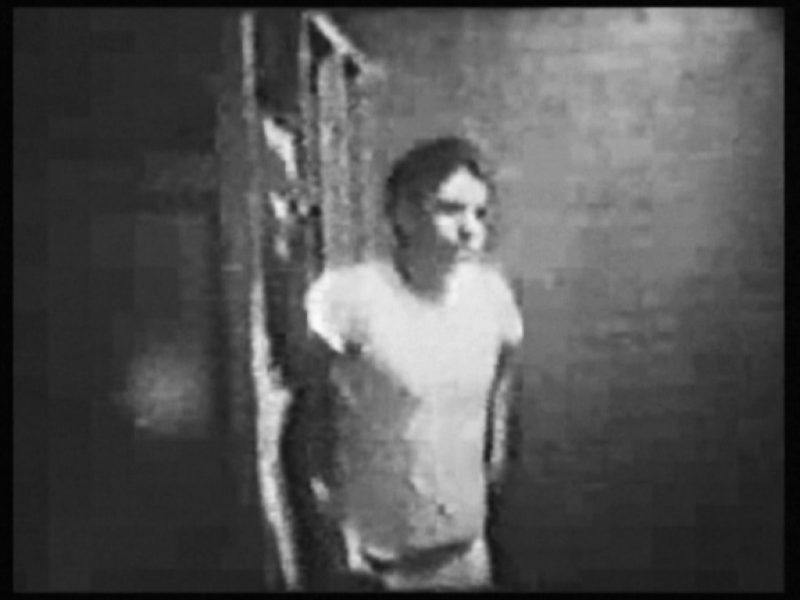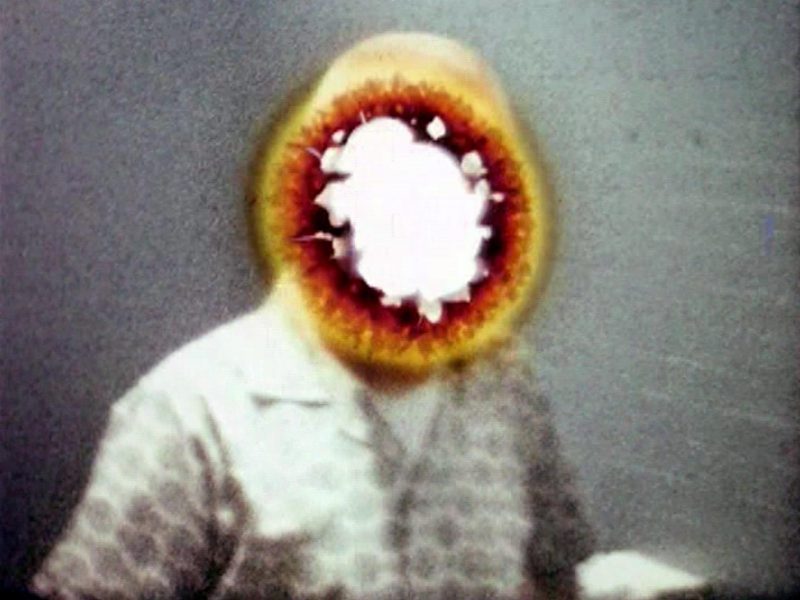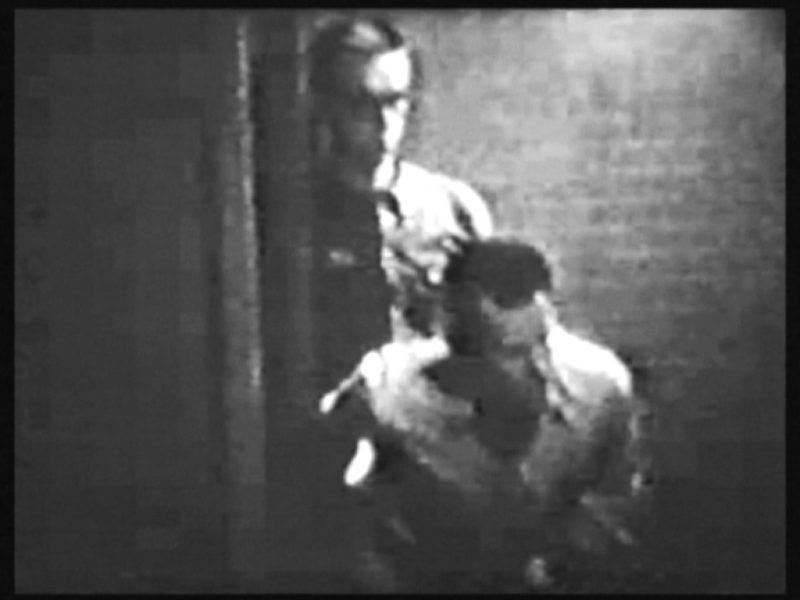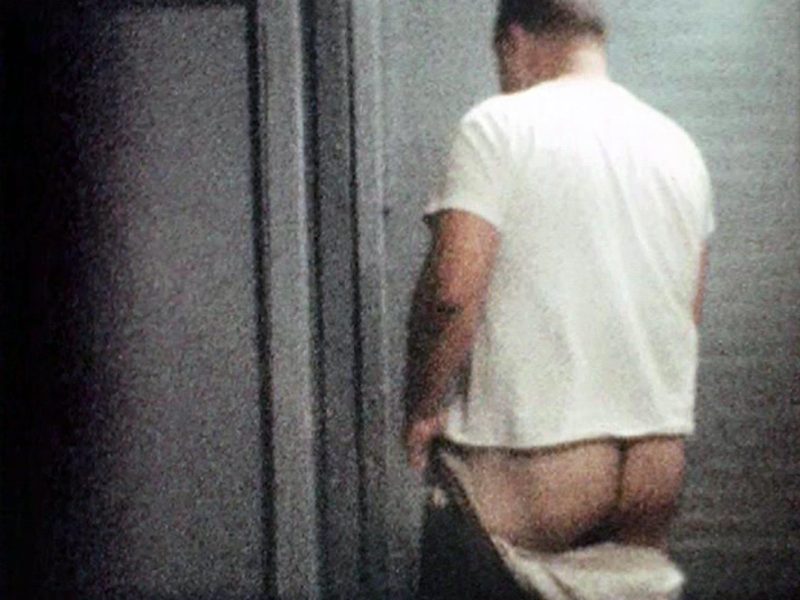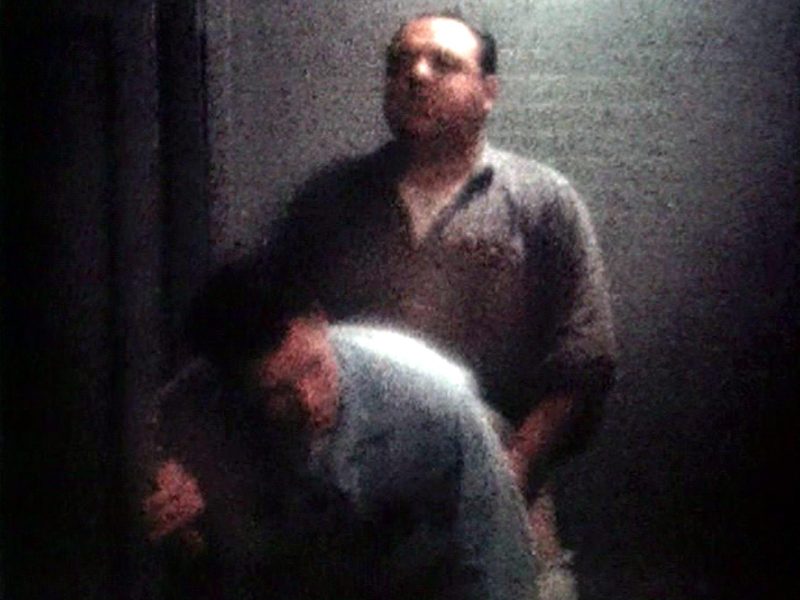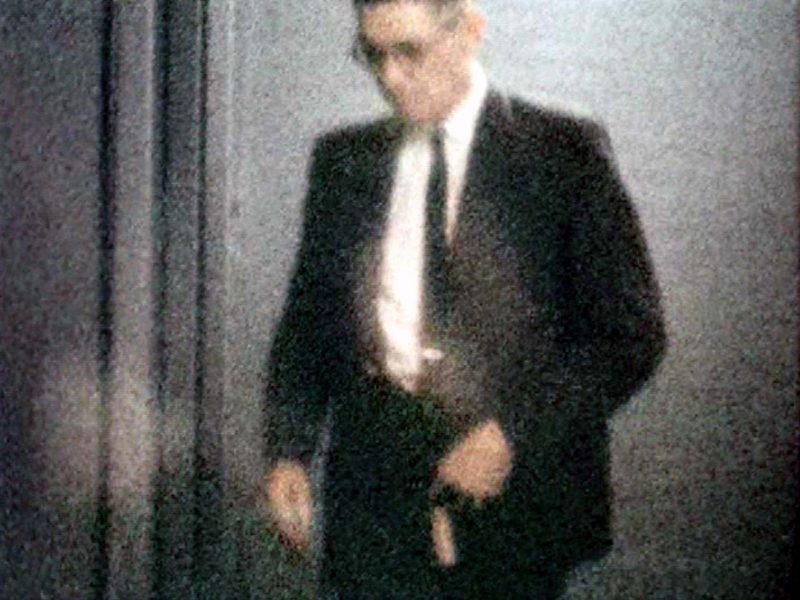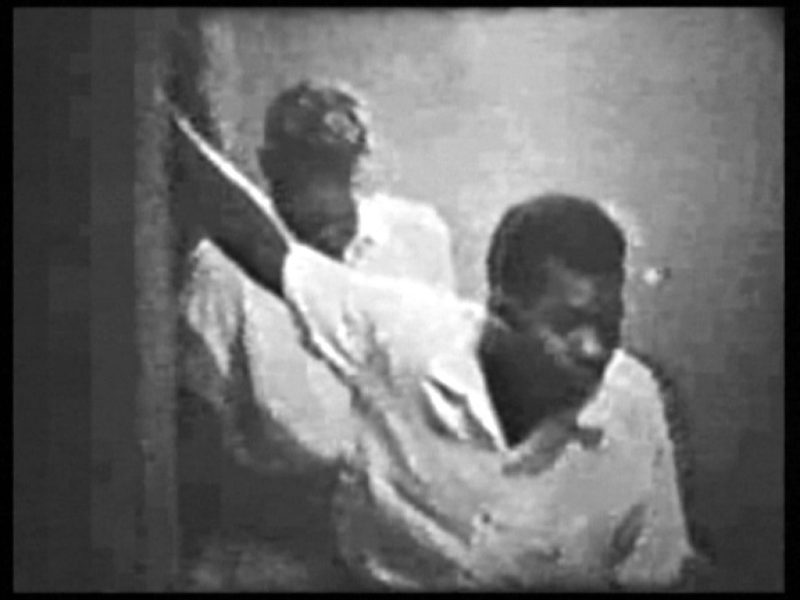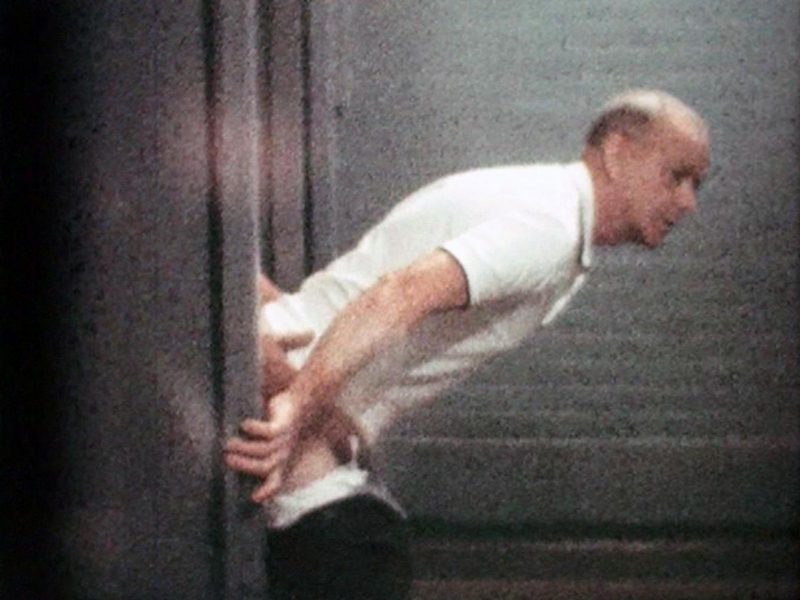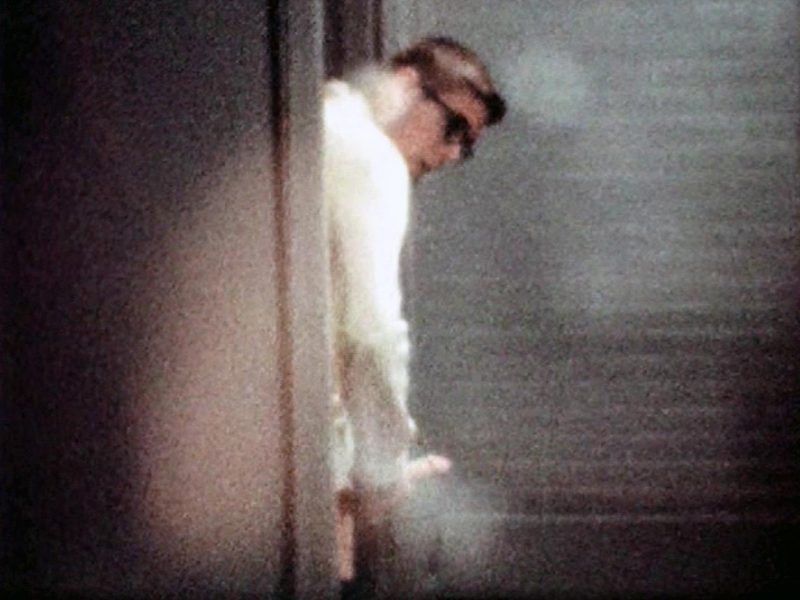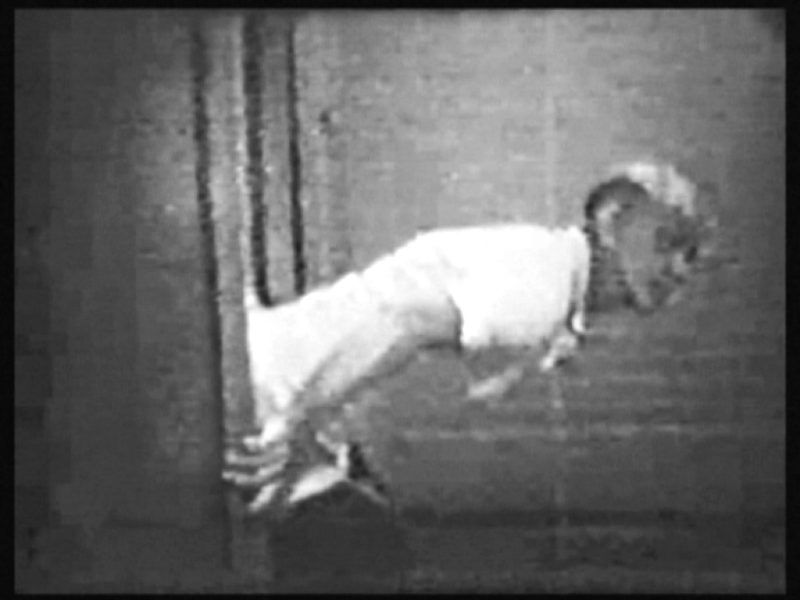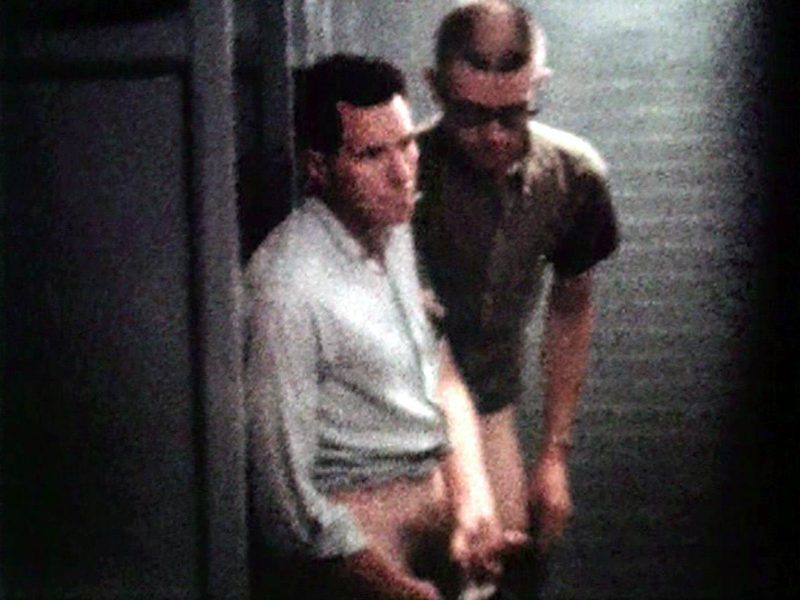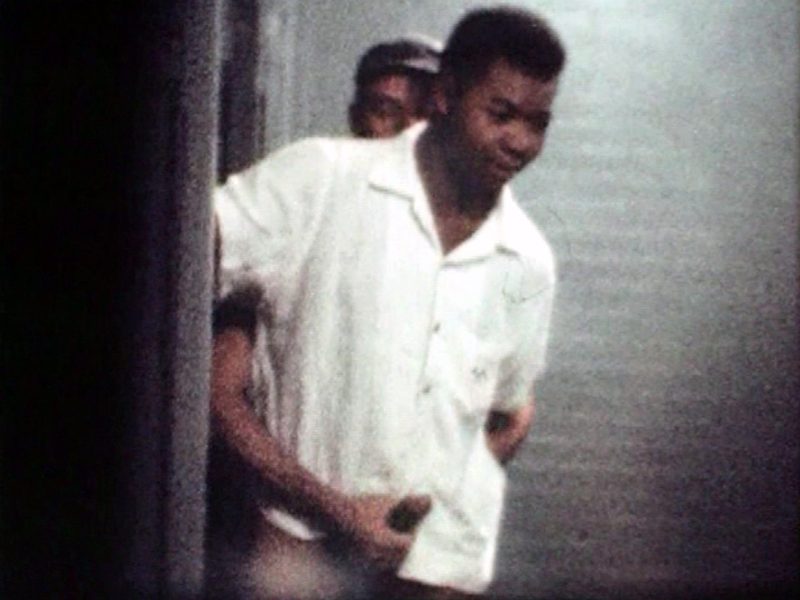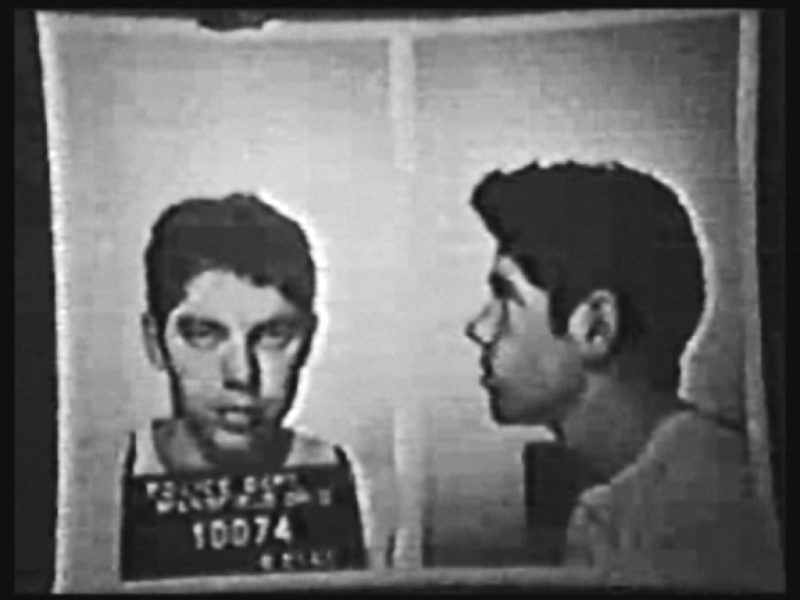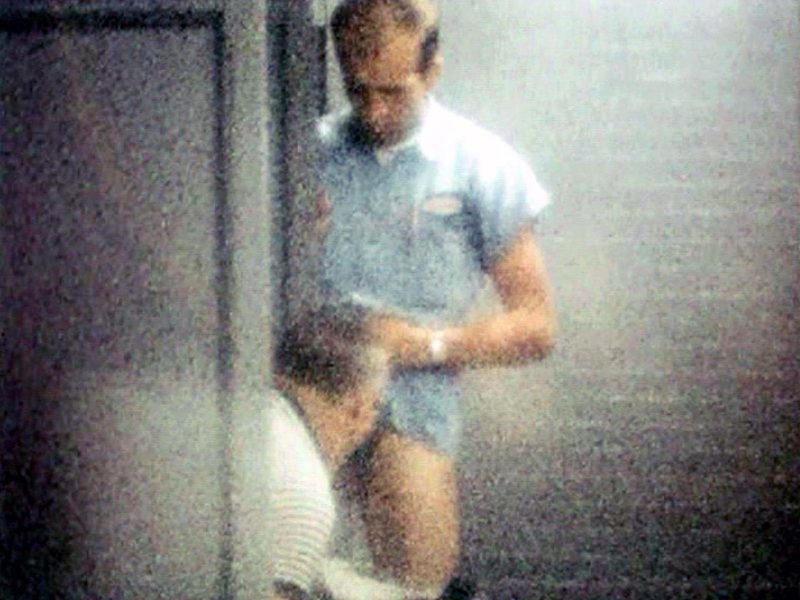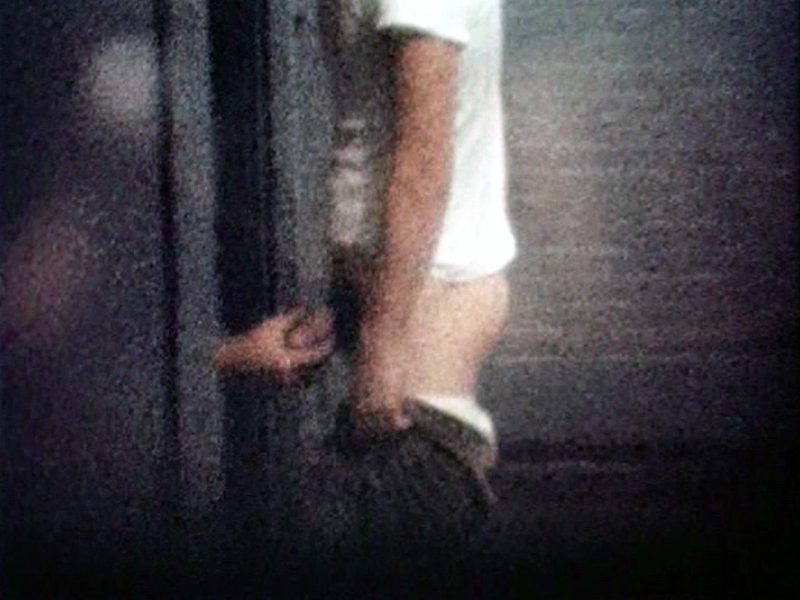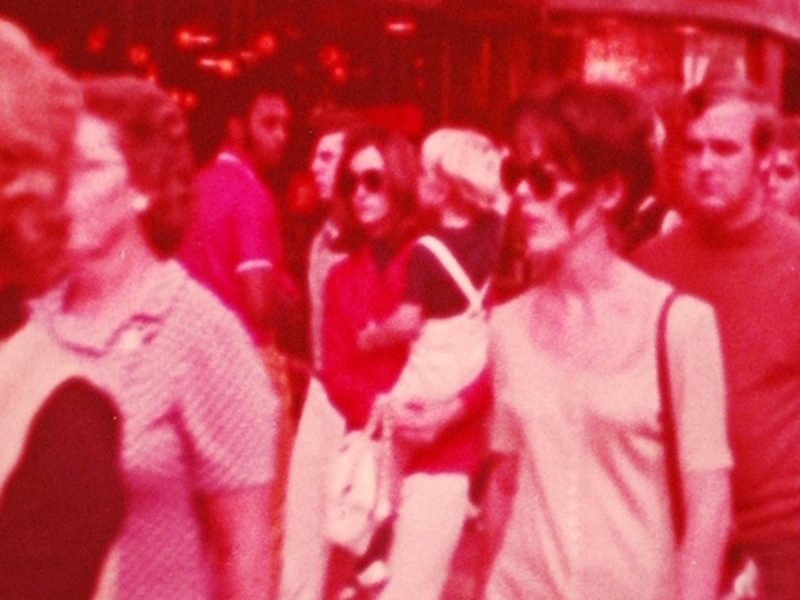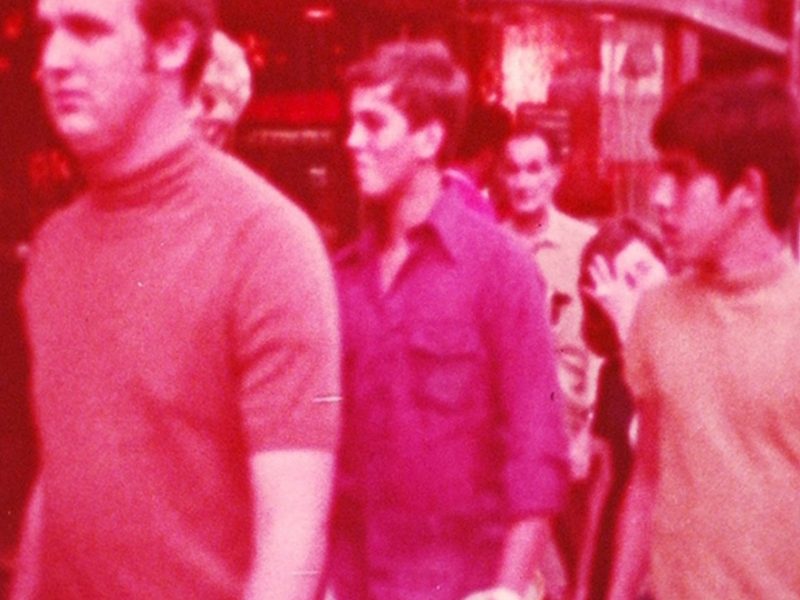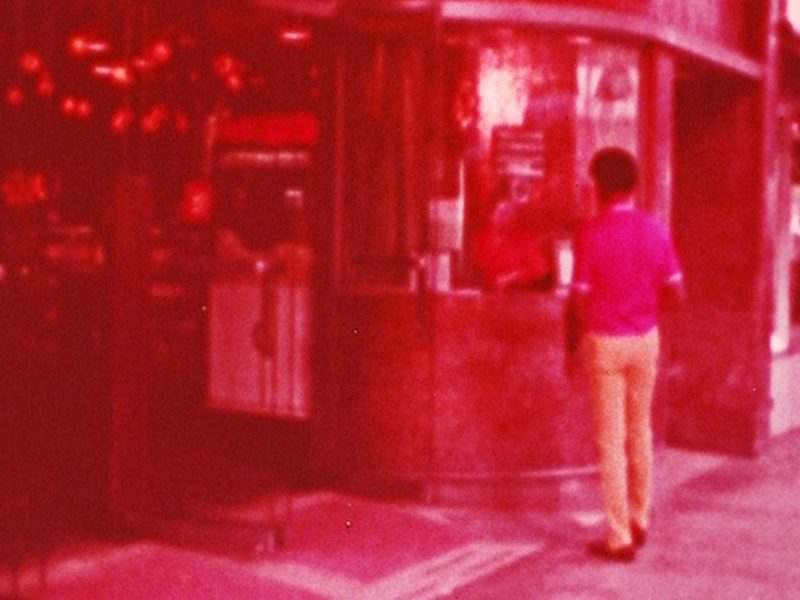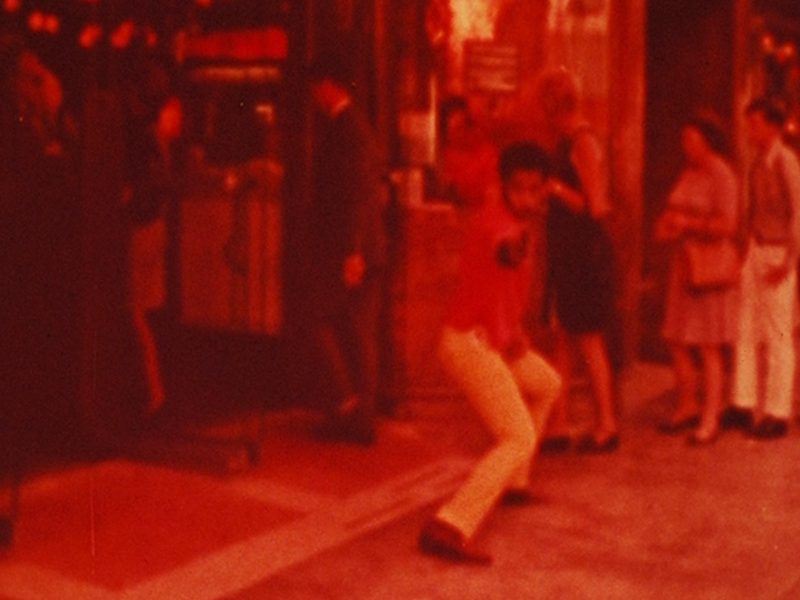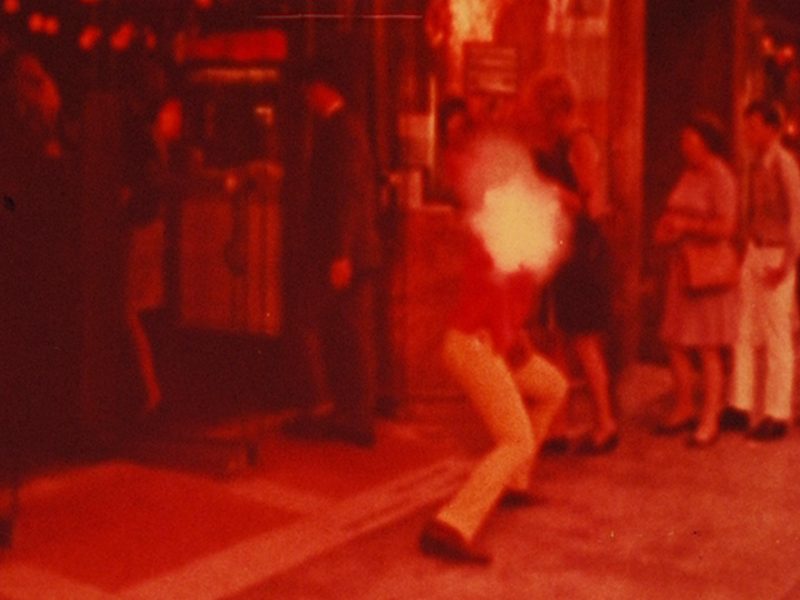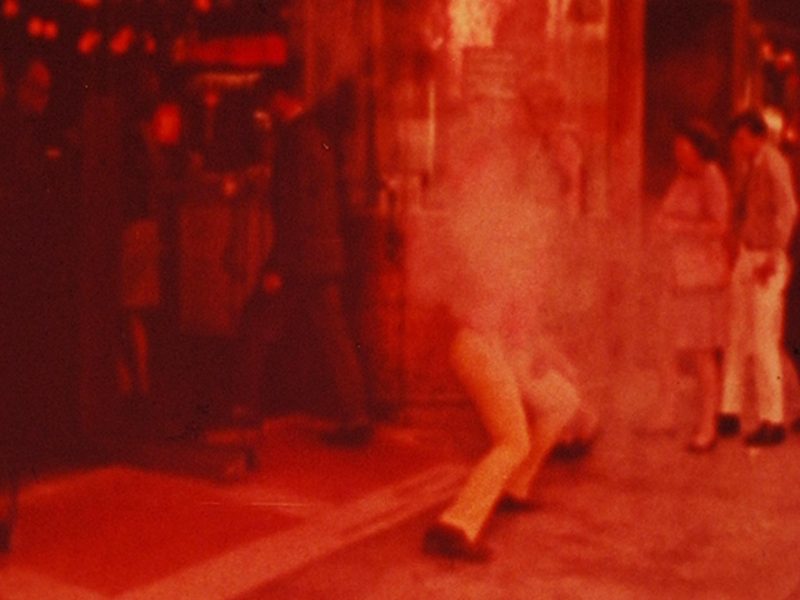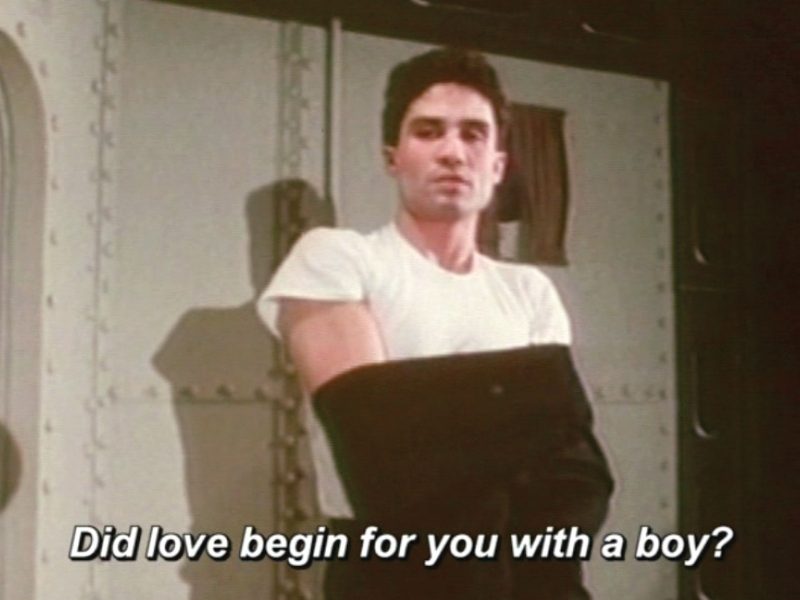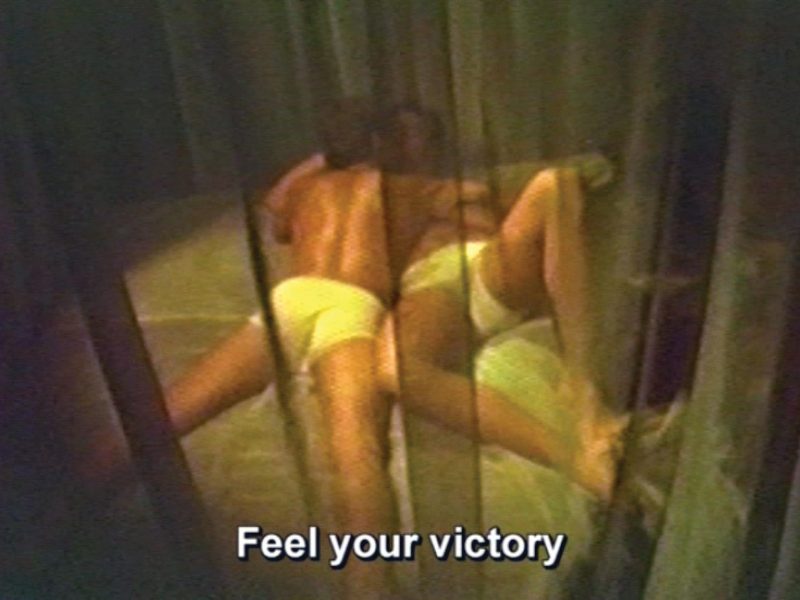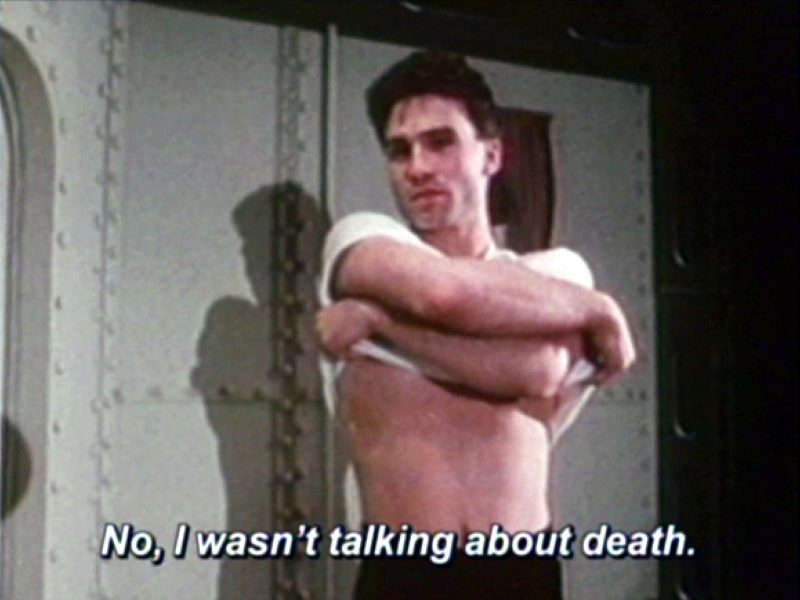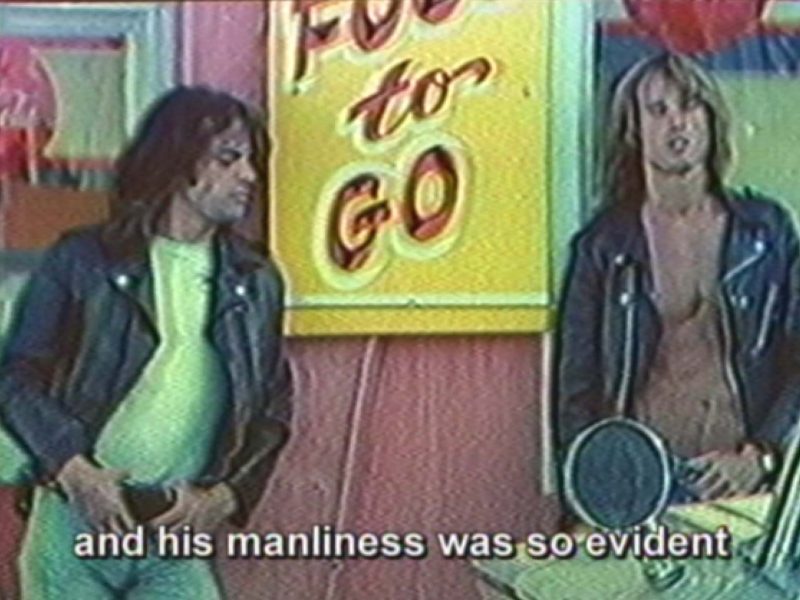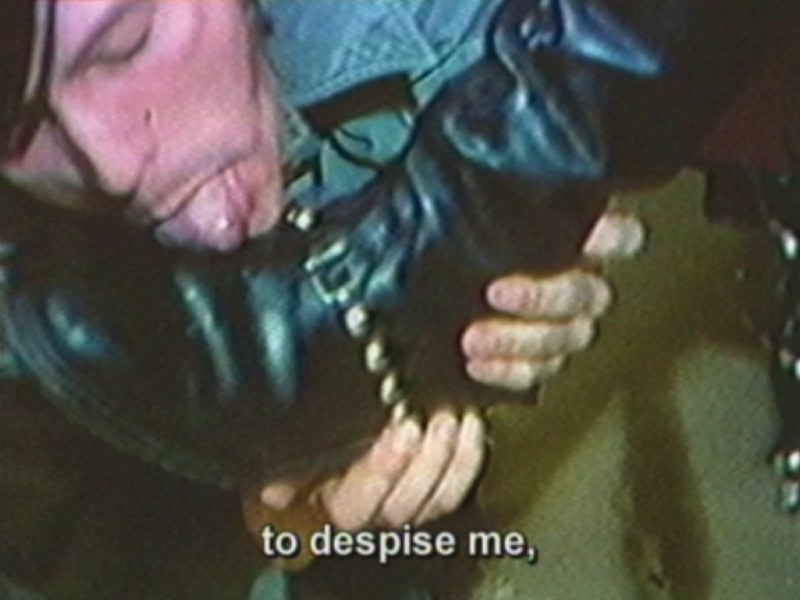The Illicit World of William E. Jones
TEAROOM
(16mm film transferred to video, color, silent, 56 minutes, 1962/2007)
Tearoom consists of footage shot by the police in the course of a crackdown on public sex in the American Midwest. In the summer of 1962, the Mansfield, Ohio, Police Department photographed men in a restroom under the main square of the city. The cameramen hid in a closet and watched the clandestine activities through a two-way mirror. The film they shot was used in court as evidence against the defendants, all of whom were found guilty of sodomy, which at that time carried a mandatory minimum sentence of one year in the state penitentiary. The original surveillance footage shot by the police came into the possession of the artist while researching the cases. The unedited scenes of ordinary men of various races and classes meeting to have sex were so powerful that the director decided to present the footage with a minimum of intervention. Tearoom is a radical example of film presented “as found” for the purpose of circulating historical images that have otherwise been suppressed.
&
SHOOT DON’T SHOOT
(video, color, sound, 4 minutes and 33 seconds, 2012)
Shoot Don’t Shoot adapts a law enforcement instructional film that trains officers to decide by instinct whether or not to fire their guns. The suspect in this sequence fits the following description: “a black man wearing a pinkish shirt and yellow pants.”
BIOGRAPHY
William E. Jones is an artist, filmmaker, and writer. He has made the experimental films Massillon(1991) and Finished (1997); videos including The Fall of Communism as Seen in Gay Pornography(1998), Shoot Don’t Shoot (2012) and Psychic Driving (2014); the documentary Is It Really So Strange?(2004); and many other works, including the essay film Fall into Ruin (2017), about the Greek art dealer Alexander Iolas (1907-1987) and his abandoned house in Athens.
Jones’s films have been the subject of retrospectives at Tate Modern, London (2005); Anthology Film Archives, New York (2010); Austrian Film Museum, Vienna (2011); and Oberhausen Short Film Festival (2011). He participated in the 1993 and 2008 Whitney Biennials, the 2009 Venice Biennale, and the 2011 Istanbul Biennial. He has been exhibited at Musée du Louvre, Palais de Tokyo, and Cinémathèque française, Paris; Museum für Moderne Kunst, Frankfurt; Museum of Modern Art, New York; Walker Art Center, Minneapolis; Carnegie Museum, Pittsburgh; St. Louis Art Museum; San Francisco Museum of Modern Art; and Museum of Contemporary Art, Los Angeles.
William E. Jones has published the following non-fiction books: Is It Really So Strange? (2006); Tearoom (2008); Killed: Rejected Images of the Farm Security Administration (2010); Halsted Plays Himself (2011); Between Artists: Thom Andersen and William E. Jones (2013); Imitation of Christ, a catalogue for the exhibition he curated at UCLA Hammer Museum in 2013; Flesh and the Cosmos(2014); and True Homosexual Experiences: Boyd McDonald and Straight to Hell (2016). Most recently, he has published novels: I’m Open to Anything (2019), I Should Have Known Better (2021) and the forthcoming I Didn’t See It Coming. Jones’s writing has also appeared in periodicals such as Animal Shelter, Area Sneaks, Artforum, Bidoun, Butt, Frieze, Little Joe, Mousse, Osmos, and The White Review.
Jones has received a John Simon Guggenheim Memorial Fellowship, an Andy Warhol Foundation Arts Writer’s Grant, a Foundation for Contemporary Art Grant, a City of Los Angeles (COLA) Grant, and two California Community Foundation Fellowships.
William E. Jones is represented by David Kordansky Gallery, Los Angeles, The Modern Institute, Glasgow, and Galleria Raffaella Cortese, Milan.

